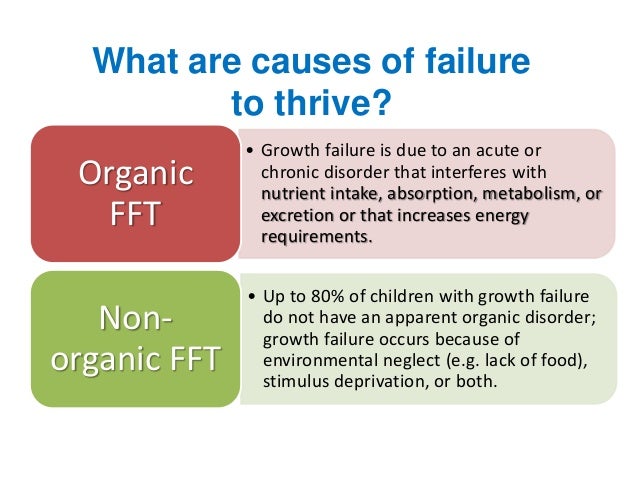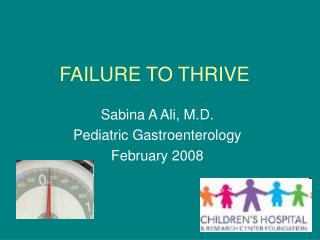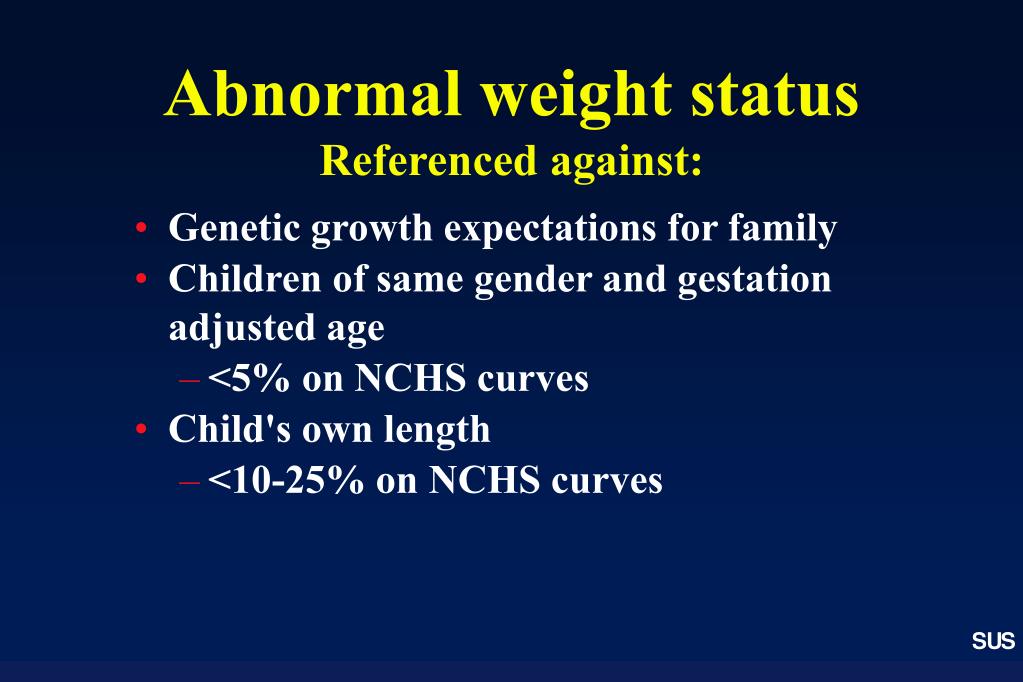

If your child suddenly loses weight, it can be a sign of failure to thrive. The most important indicators of failure to thrive are weight and height. failure to introduce solid foods appropriately.inadequate understanding or support of the child’s needs by parents.However, the reality is that a combination of factors is often responsible, so this categorization is outdated.Įxamples of medical conditions that contribute to failure to thrive include:Įxamples of nonmedical conditions that contribute to failure to thrive include: The second was nonorganic failure to thrive, where no known medical condition exists.


There used to be two subcategories for failure to thrive diagnoses: The first was organic failure to thrive, which stems from an underlying medical condition. Although many factors contribute to failure to thrive, the bottom line is insufficient nutrition.

Your child may also receive a failure to thrive diagnosis if they lose weight consistently, falling from a higher percentile over time. In general, the threshold for failure to thrive is below the third to fifth percentiles for weight and height. Doctors often need to rule out child abuse and neglect.
genetic factors, such as a tendency for family members to be small in stature, and. There are a number of common reasons an infant or toddler might not to weight. If your child fails to gain weight for an overly long time, it can lead to permanent health problems. If lack of growth can be identified and dealt with as early as possible, then your child’s health outcomes are likely to be better. Infants born prematurely follow slightly different growth patterns on account of their early birth. Understanding Failure to Thriveįailure to thrive is assessed on the basis of the average growth for your child’s age. Your child is usually monitored over a period of time, with measures taken to promote weight gain and growth. There are many factors that can contribute to failure to thrive. Important nursing goals in the care of the infant include providing optimal nutrition, comfort, and rest meeting the infant's psychosocial needs and supplying emotional nurturance and sensory stimulation appropriate to the assessed developmental level.Your pediatrician may give a failure to thrive diagnosis if your baby or child doesn’t grow or gain weight as expected. The major goals are to encourage the mother to express her feelings without fear of rejection, to model the role of mother and teach her nurturing behaviors, and to promote her self-esteem and confidence. Intervention encompasses identification of infants and mothers at risk for the syndrome and care of both mother or primary caregiver and infant. The need for comfort and nurturing by the infant may not be met, and this may lead to a cycle that exacerbates feeding problems. The infant who is feeding poorly and is irritable may elicit a response in the caregiver that reflects tension and frustration. Parents of infants with failure to thrive syndrome typically display feelings of concern and inadequacy. These children often have a history of irritability, feeding problems, and disturbed sleep patterns. Additionally, the child with this syndrome displays withdrawing behavior, avoidance of eye contact, and stiffness or flaccid posture when held. The syndrome was first noticed when European psychiatrists studied the development of babies who had spent the first five years of their lives in institutions where they were deprived of the emotional warmth of a mother, father, or other primary caregiver.Ĭharacteristics of the failure to thrive syndrome include lack of physical growth (for example, weight and height below the third percentile for age) and below normal achievement in fine and gross motor, social-adaptive, and language skills as assessed by psychometric testing using a tool such as the Denver Developmental Screening Test. The syndrome can be seen in children with a physical illness, but the term is most often taken to mean failure to thrive due to psychosocial effects such as maternal deprivation. Failure to thrive ( failure to thrive syndrome) physical and developmental retardation in infants and small children.








 0 kommentar(er)
0 kommentar(er)
